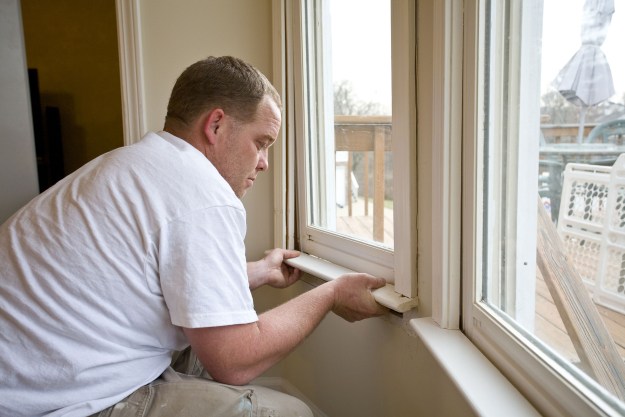Has your coffee tasted a little off lately? Maybe it has a strange taste, or your drip coffee maker just doesn’t quite make coffee as well and fast as it used to. Think back to the last time you thoroughly cleaned your drip coffee maker. Has it been a while? Have you ever cleaned it at all?
If you’ve never cleaned it or it’s been a long time, it could be the reason your coffee isn’t quite as good as it used to be. Here’s how to do it the right way and then maintain the clean components, so your coffee always hits just the right spot.

Why should I clean my coffee maker?
One of the best environments for germs, mold, and bacteria to grow is a warm, dark, moist place. Sounds a lot like your coffee maker, doesn’t it? Cleaning your coffee maker regularly is the key to ensuring that you don’t allow these to grow unfettered.
Oils from coffee can also cause buildup that gives bacteria and mold something to stick to, says Harvard study.Not only do you get that off-taste every time the buildup makes its way into your coffee, but that same mold and bacteria are also getting into your cup.
Hard water can also cause calcium buildup that, over time, blocks the flow of water and the drip mechanism, states USGS. Your coffee maker gets slower and slower until it seems to take forever to finish. Cleaning your coffee maker ensures that it has a clear flow every time.
Experts estimate that the coffee maker is the fifth-germiest place in your house, giving you good reason to ensure you’re always cleaning your coffee maker. Even if this mold and bacteria don’t kill you, it can shorten the life of your coffee maker.
Allowing the buildup to stay can cause the parts of your coffee maker to fail much more quickly. Although budget machines aren’t meant to last as long as high-end machines, even an affordable coffee maker can have quite a bit of life with the right cleaning.
If it’s been a long time (or never)
If it’s been a while since you’ve cleaned your coffee maker, it’s essential that you deep clean it right away. It’s vital that you take care of the buildup, scale, and potential germs or bacteria before you try to clean it daily.
Without going through a deep clean, you may end up having to throw away the entire coffee maker. We can’t have that.
Follow these steps to deep clean and sanitize:
- Take apart the coffee maker and gently clean everything you can with soap and water. Run the carafe through the dishwasher if necessary.
- Fill the reservoir up with equal parts white vinegar and water. Put a filter in the basket but no coffee and turn on a cycle, suggests Better Homes & Gardens.
- Allow the vinegar to run about halfway through the cycle and turn it off. Let the vinegar soak for at least an hour to help loosen any tough scale. Finish the cycle and then toss the filter.
- Run a fresh water cycle through once or twice to remove any final scale and get rid of the vinegar smell to ensure you don’t get the taste with your next cycle.
- Clean the carafe. The vinegar should help remove any lingering coffee stains from the carafe, too.
- If you’re having trouble getting buildup off your glass carafe, you might consider using a denture or Alka-Seltzer tablet in the carafe with some water overnight. Denture tablets are made to remove any buildup and scale quickly and efficiently. Thoroughly wash the carafe the next morning to remove any lingering tablet, and you’re good to go. (Don’t soak the plastic parts in this mixture.)
- If your carafe is plastic, the vinegar solution should work to remove stains. Consider wiping down the interior after each use to ensure that it doesn’t have time to build up moisture.
After Each Brew:
Once you’ve deep cleaned your drip coffee maker, you can take over regular maintenance to keep it running smoothly.
- Right after your brew, take the dirty filter and ground out and toss them.
- Wipe down the basket to help it dry and leave the top open for a few minutes to release any lingering moisture.
- Wipe down any bubbles or stains.
- Clean out the base and to ensure that nothing burns on the next cycle.
At the end of each day:
Once you’ve finished your coffee and you’re getting ready for the next day, you should make sure to finish cleaning the components of the machine. This is what you need to do:
- Wash all the delicate components.
- Run the carafe through the dishwasher. If it has stubborn coffee stains, you might use a bit of dry rice with water and soap to help move things around before you put it into the dishwasher.
- Take out the basket and clean that with soap or run it through the dishwasher, as well.
- Make sure the top part has air-dried and doesn’t hold any moisture.
What to do every month:
To ensure that your coffee continues to taste excellent, you need to maintain the coffee maker well. Once a month, redo the vinegar cycle to remove hard-water stains, kill bacteria, and ensure that the coffee maker is running well.
Keeping up with your coffee maker
If you accidentally skip a step once in a while, it’s not that big of a deal. However, regular maintenance can give your coffee maker a longer life, help ensure that you don’t let bacteria and mold grow, and provide faster coffee.
The life of your coffee maker doesn’t have to end in a frustrating battle with terrible coffee. Just some essential daily maintenance and upkeep once a month or so can have an impact. You’ll get better-tasting coffee without worrying about what’s growing in it and have a better flow. You may even find your coffee maker putting out coffee like it’s brand new again.
Meanwhile, read on further and learn everything you need to know about drinking coffee on a keto diet.
Editors' Recommendations
- Get rid of gross washing machine smells with these simple tips
- How to hand-wash clothes (so you don’t ruin those special garments)
- Avoid a huge fire risk in your home: How to clean your dryer vent
- How to clean glass shower doors the right way (say goodbye to streaks)
- How to remove stripped screws without any hassle




